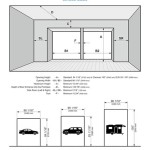How To Paint a Concrete Garage Floor
Painting a concrete garage floor can significantly enhance its appearance, protect it from damage, and make cleaning easier. This process requires careful preparation and the correct materials to ensure a durable and long-lasting finish. This guide outlines the necessary steps to successfully paint a concrete garage floor.
1. Prepare the Surface
Proper surface preparation is crucial for paint adhesion. Begin by thoroughly cleaning the floor to remove dirt, oil, grease, and any other contaminants. A degreaser specifically designed for concrete is recommended for optimal results. Apply the degreaser according to the manufacturer's instructions and rinse thoroughly. For stubborn grease stains, a pressure washer can be particularly effective.
Next, address any cracks or imperfections in the concrete. Use a concrete patching compound to fill cracks and level uneven areas. Allow the patching compound to dry completely according to the manufacturer's instructions. Once dry, smooth the patched areas with a grinding tool or sandpaper to create a level surface.
For previously painted surfaces, any peeling or flaking paint must be removed. A scraper or wire brush can be used for this purpose. For large areas, a floor grinder fitted with a diamond grinding disc significantly speeds up the process. After removing loose paint, ensure the surface is clean and free of dust.
2. Etch the Concrete
Etching the concrete creates a rough surface texture that promotes better paint adhesion. This is achieved using a concrete etching solution, typically containing muriatic acid. Follow the manufacturer's instructions carefully when using these solutions, ensuring proper ventilation and wearing appropriate safety gear, including gloves, eye protection, and a respirator. Apply the etching solution evenly across the floor and allow it to react for the recommended time. Thoroughly rinse the floor with water after the etching process is complete to neutralize the acid.
3. Choose the Right Paint
Selecting the correct type of paint is vital for a durable finish. Epoxy-based paints are highly recommended for garage floors due to their exceptional durability, chemical resistance, and abrasion resistance. They can withstand heavy traffic, impacts, and spills. Alternatively, acrylic latex paints designed for concrete floors can be used. These offer good durability but may not be as resistant to chemicals and heavy wear as epoxy paints.
Consider the desired finish when choosing a paint. Epoxy paints typically offer a high-gloss finish, while acrylic latex paints are available in various sheen levels. Choose a color that complements the garage's overall aesthetic and provides adequate visibility.
4. Prime the Concrete (If Necessary)
Priming helps to seal the concrete and further improve paint adhesion, especially for porous concrete surfaces. Consult the paint manufacturer’s guidelines to determine if a primer is recommended for your specific paint and concrete type. If a primer is required, apply it evenly across the entire floor using a roller or sprayer designed for concrete surfaces. Allow the primer to dry completely according to the manufacturer’s instructions before applying the topcoat.
5. Apply the Paint
Before applying the paint, ensure the garage is well-ventilated. Apply the paint in thin, even coats using a roller or sprayer specifically designed for concrete surfaces. For epoxy paints, carefully follow the manufacturer's mixing instructions, as the two-part epoxy system usually has a limited working time. Work in manageable sections to ensure a consistent finish. Allow each coat to dry completely according to the manufacturer’s recommendations before applying subsequent coats. Most epoxy paints require two coats for optimal durability, while acrylic latex paints may require more.
6. Allow Proper Drying Time
Allow the final coat of paint to dry and cure completely before subjecting the floor to any traffic or heavy items. The drying time can vary depending on the type of paint, the ambient temperature, and the humidity levels. Refer to the paint manufacturer's instructions for the recommended drying and curing time. In general, it's best to allow the paint to cure for at least 72 hours before using the garage normally. This ensures maximum hardness and durability.
7. Apply a Sealer (Optional)
While not always necessary, applying a concrete sealer can provide an additional layer of protection and enhance the longevity of the paint. Sealers are especially beneficial in garages exposed to frequent spills or heavy traffic. Choose a sealer that is compatible with the type of paint used. Apply the sealer according to the manufacturer’s instructions, ensuring even coverage. Allow the sealer to dry completely before using the garage.

How To Paint A Garage Floor Clean And Scentsible

How I Painted My Concrete Garage Floor Before After True Value

How To Paint Garage Floor Regal Paints Industrial Protective Ltd

How To Paint Garage Floors With 1 Part Within The Grove

How To Paint A Garage Floor Project Summary Bob Vila

How To Use Garage Floor Paint Transform Your Home

Painting Your Garage Floors Do S Dont Making Pretty Spaces Blog

How To Do Painted Concrete Floors In Your Garage Using Floor Paint

How To Paint Garage Floor Da Kine Paints

How I Painted My Concrete Garage Floor Before After True Value
Related Posts








